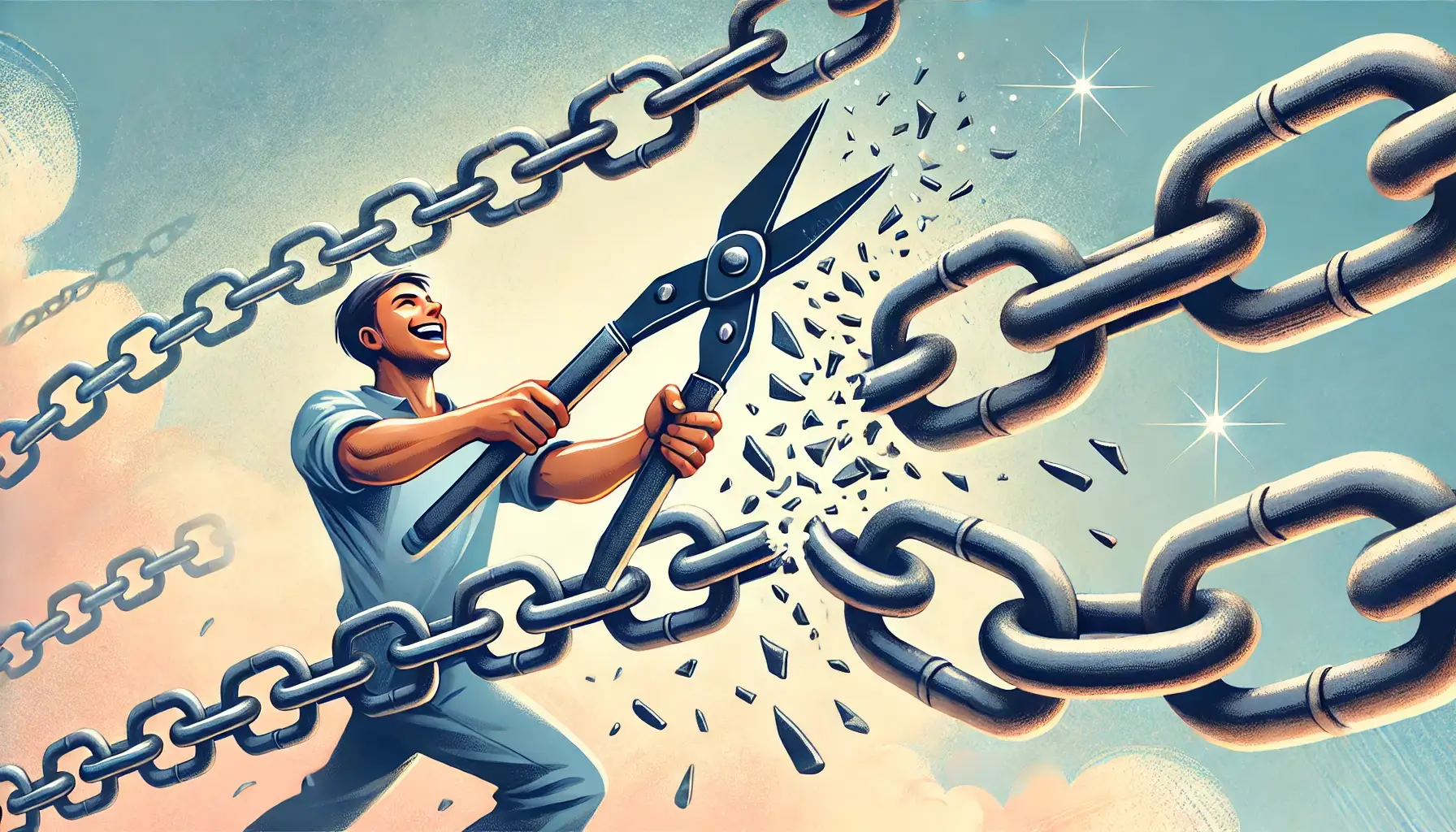
Learn How To Disavow Backlinks To Improve Your Site’s SEO

As you try to build high-quality backlinks to your company’s website, it’s possible you’ll end up with some incoming links from low-quality pages that negatively affect you. Thankfully, when you learn how to disavow backlinks, you may be able to mitigate the damage.
However, like other search engine optimization (SEO) strategies, disavowing “toxic” links can go wrong if you don’t know what you’re doing. One company even discovered that prematurely disavowing links led to a 60% drop in traffic and months of waiting for recovery.
How do you disavow backlinks the right way? Let us show you.
What Does It Mean To Disavow Backlinks?
Disavowing a backlink means you’re asking Google to disregard a specific inbound link that points to your domain. As a result, Google won’t use that link as a factor when ranking your site’s position on search engine results pages (SERPs).
Be aware, however, that submitting a list of sites that you want to disavow is technically only a request. The Google team could ignore you, but experience has shown that to be rare. Expect Google to honor your petition and disavow the requested sites.
Is It Worth Disavowing Backlinks?

Yes, it can be worth disavowing backlinks when too many unnatural or spammy links are pointing to your site. In particular, you need to disavow backlinks whenever Google takes “manual action” on your site (aka, a penalty). This occurs when a reviewer believes you’re using sketchy backlinks to manipulate your ranking on SERPs.
These penalties result in Google ranking your page lower or omitting your site from relevant search results, tanking your traffic. Fortunately, these penalties aren’t common because Google’s algorithm now does a good job of recognizing when toxic links are unintentional. This also means that a penalty is serious business, and you need to be ready to respond quickly if you get one.
You may also consider disavowing links when you have conclusive evidence that bad backlinks are harming your SEO. This could include cases where your company used “black hat” link-building in the past and you want to correct that.
Another reason for disavowing toxic links is that you’ve come under a negative SEO attack. That’s when someone (typically a competitor) puts backlinks pointing to you on shady or low-value domains to drag down your site’s SEO. However, these attacks are uncommon, as few companies want to throw money after such a dubious strategy.
Still, you shouldn’t be too quick to start this process because you can easily wreck your SEO with a misstep. An expert backlink analysis is the best way to determine when it’s worth it to disavow backlinks.
Do You Need Help Disavowing Bad Backlinks or Building Good Ones?
If you’ve accidentally built bad backlinks to your site, BKA Content can help you right the ship. Talk to us about our SEO consulting and white-hat link-building services.
How Do You Disavow Backlinks?
If you need to disavow backlinks, start by creating a list of the offending links and domains. This requires using link auditing tools, such as Moz, Ahrefs, or Semrush, or working with SEO experts who can handle it for you. Ensure you’re only disavowing links that hurt your site.
You are more likely to disavow entire domains because spammy pages are likely to be on spammy sites. (However, you can’t disavow just a subpath of a domain.) Also, remember that HTTP properties are distinct from those beginning with HTTPS, so you need to include both on the list if necessary.
A few other important points are:
- Your list must be a simple text file, and the name must end in the “.txt” extension.
- You can only put one domain or URL on each line of your list, and URLs cannot be more than 2,048 characters.
- Google only accepts file sizes up to 2 MB or 100,000 lines, which includes comment lines and blank lines.
- Google also requires the text file to be in either the encoded UTF-8 or 7-bit ASCII format.
You can include comments and notes for your own reference by starting a line with a hashtag (#). This tells Google to ignore the information on these lines.
Now, you can upload the list to the disavow backlinks tool page. Select a “property” (meaning a web domain) and click the Upload button to select the list file from your device.
Google will let you know if the file has any errors. Otherwise, the page will display that the upload was successful. From then on, you can always access the disavow list from your Links report.
You may have to wait as many as several weeks for disavowing backlinks to work, but it could take effect within a few days. That’s because Google needs time to incorporate your request into its indexing.
Can You Undo Disavowing Specific Backlinks?

You can remove a full list by going to the disavow backlinks tool page and selecting a site or domain from the property list. Then, click Cancel Disavowals.
Another option is to submit a different list that doesn’t include the sites you no longer want to disavow. Google only allows a single disavow list for each of your websites. If you upload a new list, it replaces the existing one.
As with initially assigning disavowed links, this process can take a few weeks. However, regaining the SEO benefits of good links you disavowed can take months. Do everything you can to get your list right the first time.
Can Backlinks Be Removed?
Yes, webmasters can remove your backlinks from their sites, but getting them to do so can be challenging. You have to contact them and hope they’ll take action.
When you get a penalty for unnatural backlinks, Google first recommends that you remove any on your own sites and ask other webmasters to remove them from their sites. Likely, the individuals behind a spammy site may not pay much attention to your request. In that case, you can use the disavow function.
The Easiest Way To Disavow Backlinks and Build Natural Links
Google is already good at recognizing and ignoring bad links, so you shouldn’t need to disavow backlinks often. Still, if it becomes necessary, you need to be ready to act quickly. Our world-class SEO experts at BKA Content can help you stay ahead of the curve.
More importantly, we can support you with a proactive white-hat link-building strategy that means you won’t have to disavow backlinks much, if at all. Chat with our team to find out more about how we can help.
- Why Your Google Business Profile Description Might Be Blocking Map Pack Rankings - December 22, 2025
- How to Get a Location Page to Rank in 24 Hours (Without Waiting Months) - December 18, 2025
- How To Create A Google Business Profile - December 12, 2025


